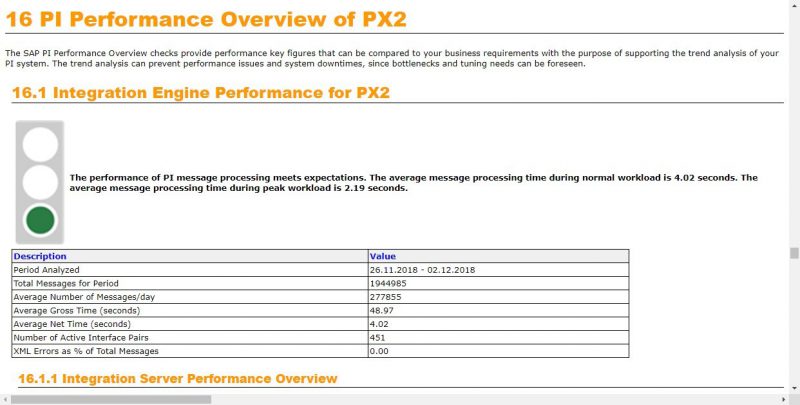Our WHINT Interface Management Solutions for SAP Middleware (Process Orchestration/Cloud Integration) provide quality & control for your interface landscape, delivering transparency & governance through documentation & reporting and well managed interfaces through monitoring & alerting.

This document describes how to differentiate our solutions from existing components and products
1. Governance, Transparency & Documentation (Interface Catalog & Interface Documentation)
- Solution Manager: The only place where you can see a kind of documentation of interfaces is the Project Documentation. There is an import mechanism existing to read from an Integration Directory and build a structure which can be used for (manual) documentation. Issue is that only the names of the interfaces are being imported and no details regarding routing, mapping or channel configuration…
- IFC: Creates an Interface and Channel Catalog into Excel with all mapping, routing, scenario and channel parameters
- IFD: Creates PDF documents per Configuration Scenario listing all routing, mapping details and descriptions.
2. Interface Reporting (MessageVolume Report)
- Performance Monitor: This is the basis for the MVR and runs within the PI Monitoring (PIMON) of a Process Orchestration system. Unfortunately it allows us to analyze and breakdown in smaller periods up to one day. Our MVR is able to retrieve data for a larger period (e.g. MONTH), collect & aggregate the volumes and figures and assign them to reporting areas.
- Solution Manager (via Early Watch Report) provides runtime statistics also on interface level. Among many SAP Basis-oriented KPIs (database, memory, sizing, housekeeping) there is also chapter 16 with performance data for all runtime engines. However, you only get the Top 20 interfaces to determine the workload – not to perform optimization by interface.
- Wily Introscope helps to analyze certain (technical) components, such as channels or queues to identify bottlenecks and optimize/fine tune the throughput.
3. Monitoring & Alerting (Interface Monitoring & MessageMissing Alert)
- PI Alerting is used for near-realtime alerting in case an error occurs. Sounds great in theory but is a flooding of alerts in reality which creates too much noise. See our article “Why standard SAP PI alerting is not enough”.
- Solution Manager provides special Process Orchestration Monitors and can be used for alert management as well. Issue here: Complexity and missing overview with lean message delivery about the landscape status (across components).
- Application Interface Framework (AIF) is a Local Backend Monitor (ABAP), mainly used for asynchronous inbound messages (XI Proxy, IDoc) which are in error and need reprocessing or manual action.
- Infrastructure Monitoring Tools such as Splunk provide SAP Basis relevant KPIs and metrics with regards to technical thresholds that can be defined (memory, file system, CPU, etc.). An interface- or process-oriented view is not foreseen.
- IMS provides periodic snapshots of your interface landscape (channels, messages and queues across runtime systems). Nothing like this exists, however you can achieve coverage by combining several tools.
- MMA has no alternative tool – if you want to check if a message was sent (or not), you simply have to check the monitoring yourself…
In fact, a combination of tools is recommended by user type:
- The SAP Basis and Infrastructure teams rely on SAP Solution Manager as well as additional infrastructure monitoring tools
- Business Users clearly work with AIF and IDoc Workflows
- Integration Experts (especially DevOps oriented) go for WHINT Interface Management and Wily Introscope if needed for deep diving into a specific topic.
To be clear: There are also other products existing in the market, targeting similar aspects. What they all have in common:
- You need additional hardware or you need to install a separate tool with a propietary user interface whereas WHINT solutions deliver Excel/PDF from and into the Process Orchestration system (accessible via http(s)://<host>:<port>/whint)
- There is no software suite available covering all aspects of Interface Management from a SAP Middleware perspective


